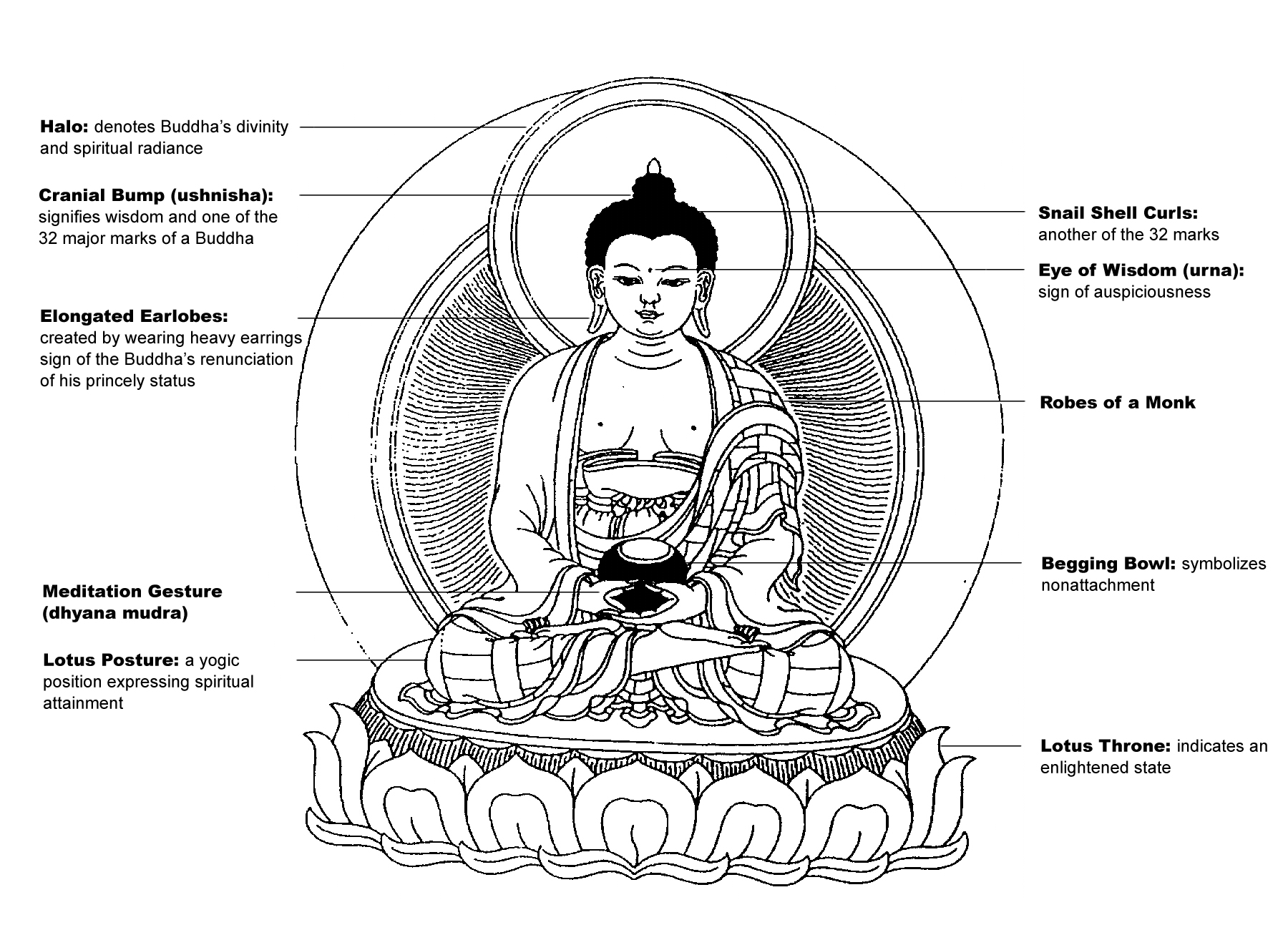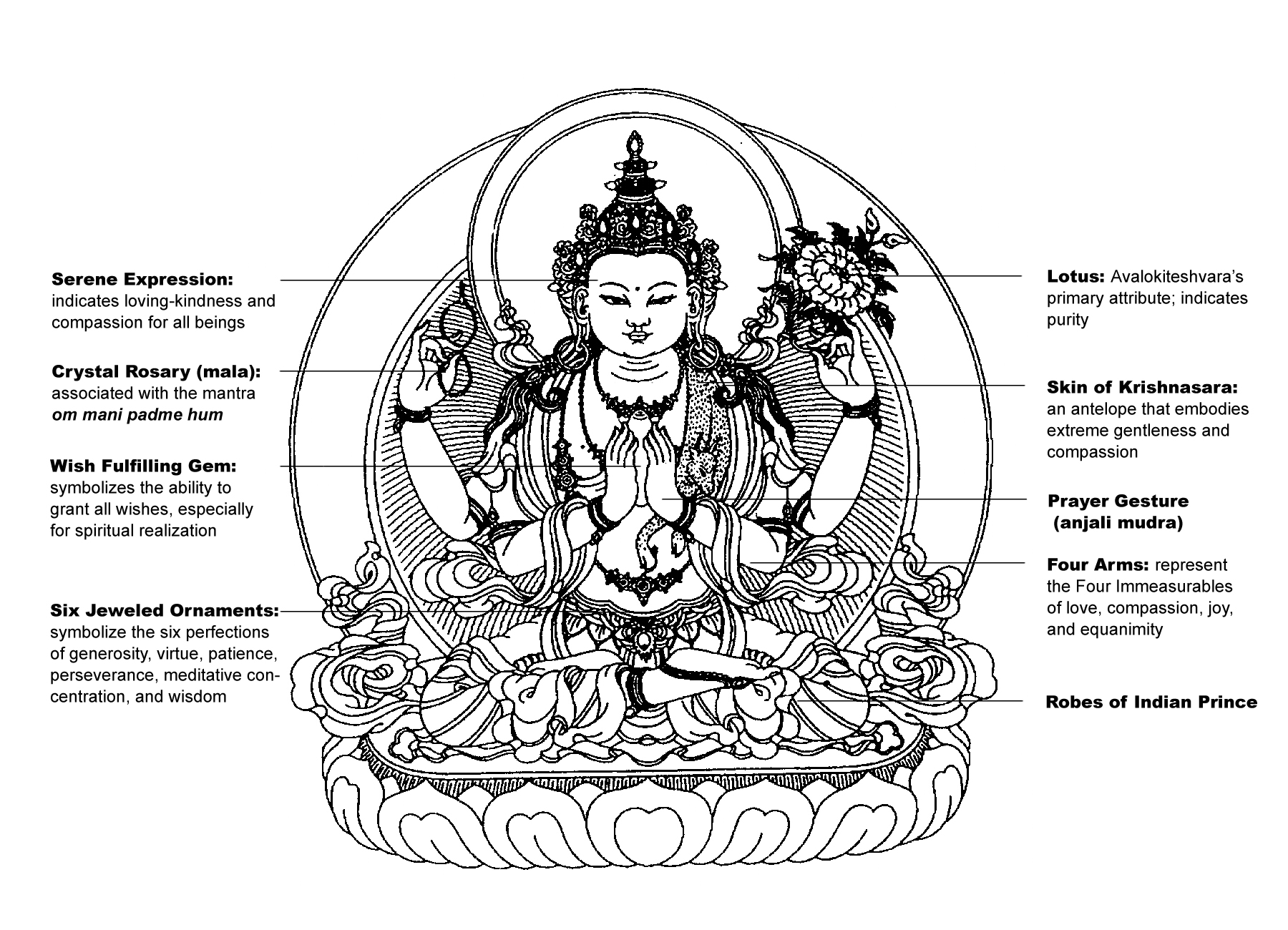“Buddha” means “Awakened One” in Sanskrit; in Mahayana Buddhism, there are countless awakened beings—such as Amitabha—in addition to the historical Buddha Shakyamuni who lived in India during the 5th century BCE. “Bodhisattva” is a being (sattva) who strives to attain awakening (bodhi) for the sake of all. A “mahasattva bodhisattva” like Avalokiteshvara is a “great being” or superlative representative of this class. Despite being closely linked, buddhas and bodhisattvas can be distinguished conceptually and iconographically. As Kamata and Shaw write: “Mahasattva Bodhisattvas inhabit the upper reaches of the path to enlightenment, including full awakening. The role of a Buddha is to manifest enlightenment itself, while the ministry of a Bodhisattva is to personify a given virtue or enlightened quality and engage in a more specialized mission to liberate beings in a selected way and elected environments.” (Circle of Bliss, 176.)
The labeled images below demonstrate how attributes, garments, and gestures help distinguish Buddha Amitabha from Bodhisattva Avalokiteshvara.



Labeling composed and designed by Liqiao Li
